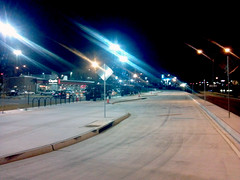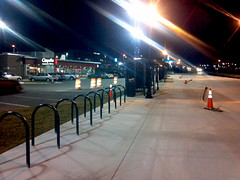|
Special Features





Image Libraries


|
|
Blog
|

Image from Marcan Tiger Preserve. |
The fourth round of the popular TIGER funding program was announced this morning by USDOT. The program can be used to fund virtually any kind of transportation project, and is extremely competitive nationally. The DC area has been successful in the past, and may put forth another regional application.
Here are the details of the program:
- It provides a total of $500 million, with several sub-categories.
- Up to $100 million may be used for intercity passenger rail. USDOT says this will be a priority this round.
- At least $120 million must go to projects located in rural areas.
- Up to $175 million may be used to leverage loans under the TIFIA program.
- The remaining $105-280 million (depending on the amount used for TIFIA) will go towards “traditional” TIGER recipients such as ports, transit, roads, cycling, and complete streets projects.
- For projects located in urban areas:
- There must be a minimum 20% local funding match.
- The minimum grant award shall be $10 million, meaning the minimum project size (with local match) is $12.5 million.
- The maximum award is $200 million, but it is unlikely any awards will be larger than $20 million.
- For projects in rural areas:
- There is no required local match.
- Projects may be as small as $1 million.
- Pre-applications are due February 20, and final applications on March 19. This is an incredibly short turnaround time.
- Funds received under the program must be obligated no later than September 30, 2013. “Obligation” is a specific federal term. It does not mean projects have to be completed by that time, but rather means they must have passed through the extensive federal planning process. This deadline essentially means that only projects which have already begun planning, or which can be planned unusually quickly, are eligible.
- As is always the case with TIGER grants, regional collaboration is encouraged, and USDOT will strive for equitable geographic distribution of funds around the country.
Average Rating: 4.8 out of 5 based on 153 user reviews.
January 31st, 2012 | Permalink
Tags: government, transportation

Earlier this morning, WMATA’s new Seven Corners bus depot officially opened. The new transit center is more like a super-sized bus stop than a true bus station, but nonetheless it’s a solid improvement.
Here is a map showing the transit center’s location. It takes advantage of the recently built pedestrian bridge over Route 50, which is a nice touch.
I happened to be in Seven Corners a couple of weeks ago and snapped these pictures of the almost-finished project. Forgive the cell phone quality.
Average Rating: 4.4 out of 5 based on 282 user reviews.
January 27th, 2012 | Permalink
Tags: bus, galleries, transportation

Interesting graphic, grabbed from the Alliance for Biking & Walking.
If we can get 12% mode share with less than 2% of funding, imagine what we might achieve with more serious money.
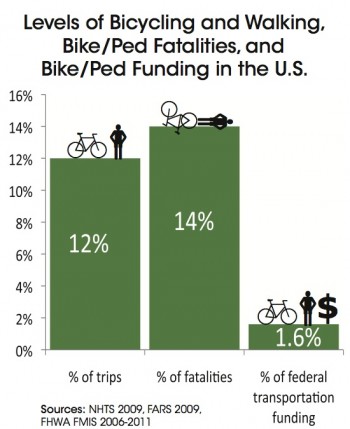
Average Rating: 4.7 out of 5 based on 243 user reviews.
January 26th, 2012 | Permalink
Tags: bike, transportation

As Virginia moves forward with private partnerships in order to build and operate HOT lanes, one of the issues that will have to be worked out is how fast traffic in the HOT lanes is designed to move. The state wants HOT lanes to move at totally uncongested speeds, while the private companies that will manage tolls would make more money (and would move more people) allowing the lanes to become somewhat congested, but not as much as the general purpose lanes.
Proposed Virginia Senate Bill 212 is intended to answer that question, and proposes to guarantee that traffic speeds in HOT lanes be protected. That’s all well and good, in theory.
But see if you can spot the problem with the proposed language:
“Any contract for the construction of any additional lanes that include HOT lanes or the conversion of any existing lanes to HOT lanes… shall specify that average vehicle speeds shall be at least as great as the posted speed limits.”
O RLY? “At least” as fast as the legal speed limit?
Traffic courts would have fun with that one.
Fortunately (or unfortunately, depending on your point of view), this legal paradox will almost surely be caught and corrected. Don’t count on ever actually being able to treat HOT lanes like the autobahn.
Average Rating: 4.5 out of 5 based on 286 user reviews.
January 25th, 2012 | Permalink
Tags: government, roads/cars, transportation

|
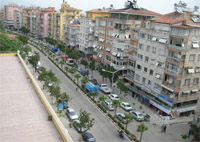
Modern Antakya. Image from Asaf Aynur. |
Last year BeyondDC ran a story about Tayasal, a Mayan city that survived until almost 1700. Obviously the story had nothing to do with urbanism in Washington, DC; it was just a tidbit of urban history that I found fascinating. I said more such stories would appear from time to time, under the History of Cities tag. Here’s number 2.
Antioch was at its height the second largest city of the Roman Empire, after Rome itself. It may have had a population of up to 600, 000, and was the chief metropolis of the Near East for centuries, through the late ancient world and into the early middle ages.
I’ve always been curious about Antioch. Why didn’t it survive into the modern era, as its peers Rome, Alexandria, Constantinople, and Damascus did? There is a modern city on the same site in today’s Turkey, Antakya, but it is a totally different place, and its modern population of 200, 000 is a fraction of its ancient size.
Antioch survived the fall of Rome and remained an important city under the Byzantine Empire into the Crusader Era, before finally being abandoned around 1400. Its long decline lasted almost 1, 000 years, and probably began with the silting of its port around 500 CE. The city was on the front line of the wars between Christianity and Islam, and changed hands multiple times over hundreds of years. It finally died after the Mongol Empire’s invasion resulted in a dramatic depression of Middle Eastern civilization in general, and the end of the Islamic Golden Age.
Average Rating: 4.7 out of 5 based on 190 user reviews.
January 23rd, 2012 | Permalink
Tags: History of cities

|
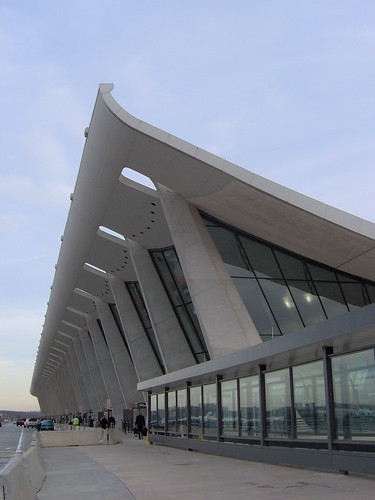
Photo by XYZ+T on Flickr. |
It seems like a no-brainer that the long-planned Dulles Airport Metro line should include a stop at Dulles Airport, but to one key decision-maker, that remains an open question.
At yesterday’s meeting of the Metropolitan Washington Airports Authority (MWAA), board member Robert Clarke Brown, a presidential appointee, suggested re-routing Phase 2 of the Silver Line to skip Dulles Airport.
The airport station is expensive, he says, and so MWAA should consider simply not building it. Metro riders hoping to access Dulles would instead transfer to some kind of shuttle or people-mover from the Route 28 station, the next closest.
Skipping the airport and replacing it with a people-mover would reduce the project’s overall $2.8 billion price tag by approximately $70 million. That, argues Brown, is reason to take his suggestion seriously. It shouldn’t be.
To the MWAA board’s credit, they quickly rejected Brown’s proposal. As they should have. The main goal of Phase 2 of the Dulles Metro project is to provide service to Dulles Airport. Failing to do so means the project would not meet its main goal.
Cutting so many corners that you don’t achieve your goal is not cost savings, it’s failure. Far from saving $70 million, by failing to provide Metro service to Dulles Airport Brown’s proposal would actually waste billions.
After all, if you’re going to force airport riders to transfer onto a shuttle anyway, why not make the transfer at Whiele Avenue, the end station for Phase 1? Why bother building Phase 2 at all? The other Phase 2 stations are all primarily park and rides, and it doesn’t make much difference at which station drivers park, so without the connection to Dulles Airport the entire argument for why Phase 2 is necessary in the first place becomes extremely flimsy.
So flimsy that many people would wonder whether the project were worth its $2.8 billion (minus $70 million) price.
The planning history of the Silver Line is replete with compromises. Express tracks to the airport or no express tracks? A subway through Tysons Corner or an elevated line? Airport station at the terminal or a few hundred feet away? At every step of the process, planners have had to weigh the ideal service situation agaist the costs. That’s life in the world of transportation planning.
But this is one compromise that absolutely cannot under any circumstances be made. The absolute minimum requirement for a Metro line to Dulles Airport must be that it actually reaches Dulles Airport. Period.
 Cross-posted at Greater Greater Washington. Cross-posted at Greater Greater Washington.
Average Rating: 4.7 out of 5 based on 260 user reviews.
January 19th, 2012 | Permalink
Tags: airports, metrorail, transportation

Today BeyondDC steps outside its usual urbanist role to help raise awareness of a big problem: Congress is considering breaking the internet with a set of radical new laws that would give private corporations nearly unlimited power to accuse anyone of copyright infringement, and to then effectively shut down that person’s website. The effect of such far-reaching and broad regulations would be catastrophic to the free exchange of ideas on the internet as it exists today.
Several of the internet’s largest sites are participating in a “blackout” today, shutting down their main content in protest of a law that could shut them down for real if passed. BeyondDC may not be Wikipedia or Reddit, but everyone needs to know about these proposed bills. We cannot let them pass without a fight.
Here is more information if you are interested. Below are some screencaps of major webpages taking part in today’s blackout.
Average Rating: 4.8 out of 5 based on 268 user reviews.
January 18th, 2012 | Permalink
Tags: in general, law, site

Yesterday on Twitter I linked to a neat map of tree biomass in the 48 contiguous states. Some people had trouble opening it and asked me to show it here. I’m happy to oblige.
The map is based on data from NASA, and originally came from Reddit. Correction: Here is the source.
Click the image for the full-size version.

Average Rating: 4.8 out of 5 based on 246 user reviews.
January 12th, 2012 | Permalink
Tags: environment

WMATA’s latest fare proposals are out, and as expected they include a number of increases.
Paying more for the same thing always sucks, but it sucks less than service cuts. Service cuts would have a stronger negative effect on ridership, which would reduce WMATA’s revenues and leave its budget in even worse shape. They’d have to cut service again and again, in a never ending death spiral of lower service leading to lower ridership leading to lower revenue leading to lower service.
The fact that our transit system is underfunded is unfortunate, and in the long term we need a sustainable solution such as more direct dedicated funding. But in the short term, another round of fare hikes is the lesser evil. It’s what WMATA has to do to stay alive.
Average Rating: 4.8 out of 5 based on 222 user reviews.
January 10th, 2012 | Permalink
Tags: metrorail, transportation

From NASA, this image shows Washington (right) and Baltimore (left), as seen from the International Space Station on November 30, 2010.
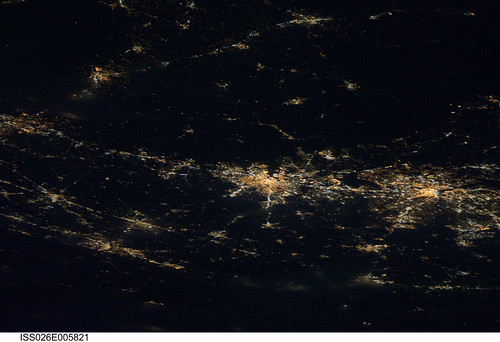
Average Rating: 4.6 out of 5 based on 229 user reviews.
January 9th, 2012 | Permalink
Tags: fun

|
Media





Site
About BeyondDC
Archive 2003-06
Contact
Category Tags:
Partners
|











